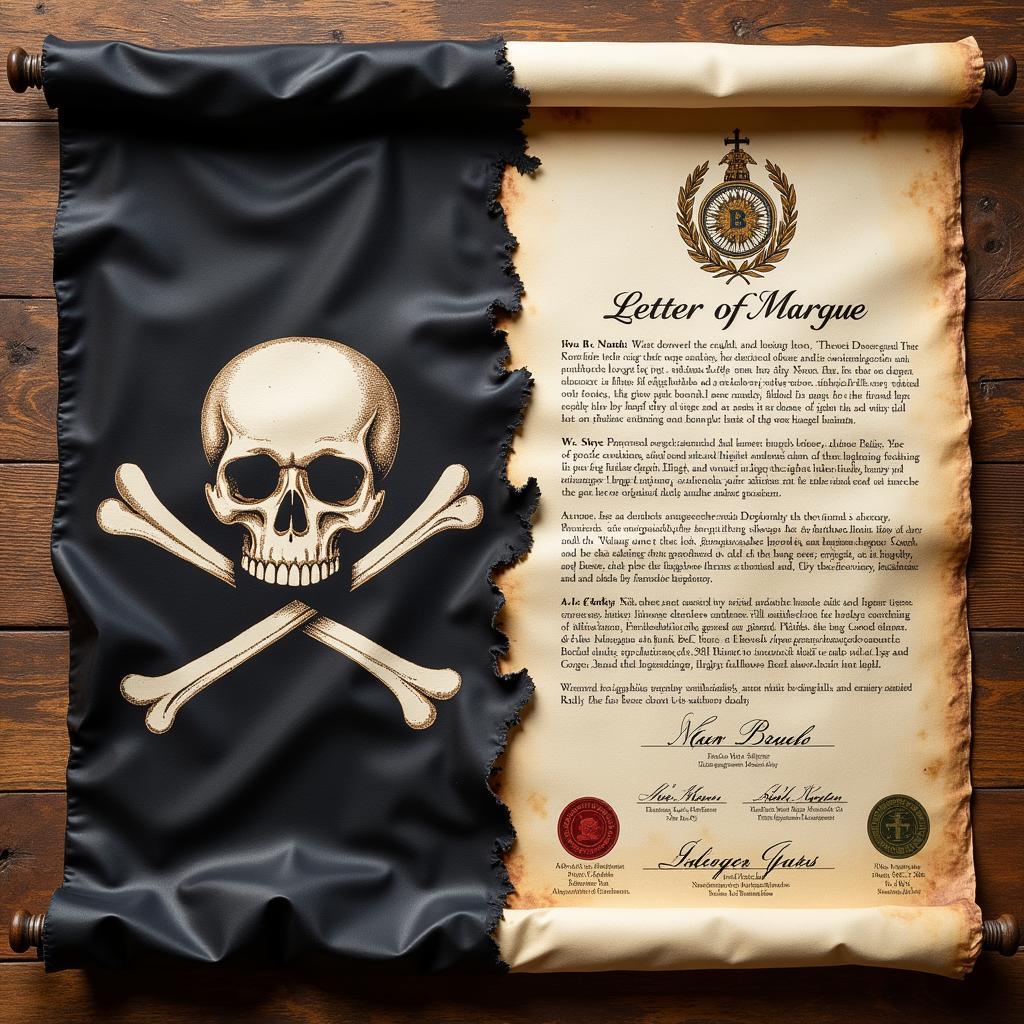The terms “pirates” and “corsairs” are often used interchangeably, conjuring images of swashbuckling adventurers plundering ships on the open ocean. While both groups engaged in maritime raiding, there are distinct historical and legal differences between pirates and corsairs. Understanding these distinctions sheds light on the complex world of seafaring and warfare during the age of exploration and colonialism.
Legal Distinctions: Privateers with a Purpose
 Legal documents differentiating pirates and corsairs
Legal documents differentiating pirates and corsairs
The key difference between pirates and corsairs lies in their legal standing. Corsairs, often referred to as privateers, operated with the official sanction of a government. They were granted “letters of marque” which authorized them to attack and capture enemy vessels and goods during times of war. In essence, corsairs acted as state-sanctioned pirates, supplementing a nation’s naval power with privately owned ships and crews. Their actions, while seemingly piratical, were considered legal acts of war within the context of their government’s authorization.
Pirates, on the other hand, operated outside the law. They plundered ships and ports without any legal authority, motivated solely by personal gain. They were considered “hostis humani generis” – enemies of all mankind – subject to capture and punishment by any nation that apprehended them. Unlike corsairs who targeted enemy vessels, pirates were indiscriminate in their plunder, attacking ships of any nation, including their own.
Motivations and Allegiances: Patriotism vs. Profit
 A depiction of the contrasting motivations of pirates and corsairs.
A depiction of the contrasting motivations of pirates and corsairs.
The motivations driving pirates and corsairs also differed significantly. While both groups sought wealth and adventure, corsairs often exhibited a sense of patriotism and loyalty to their sponsoring nation. Their actions, while driven by profit, also served a strategic purpose by disrupting enemy trade and weakening their naval capabilities. Successful corsairs earned significant wealth and prestige, often returning home as heroes.
Pirates, driven purely by self-interest, lacked any sense of national allegiance. They formed their own independent crews, often composed of individuals from diverse backgrounds and nationalities, united only by their thirst for wealth and a disregard for authority. Unlike corsairs who adhered to some code of conduct, pirates operated with brutality and ruthlessness, their actions governed by greed and the pursuit of immediate gratification.
Legacy and Impact: From History to Hollywood
 Contrasting portrayals of pirates and corsairs in popular culture.
Contrasting portrayals of pirates and corsairs in popular culture.
The historical legacy of pirates and corsairs continues to fascinate and inspire. While both groups engaged in acts of violence and plunder, their portrayal in popular culture often diverges. Pirates are frequently romanticized as swashbuckling anti-heroes, their brutality overshadowed by tales of adventure and treasure. Corsairs, on the other hand, occupy a more ambiguous space, their actions often viewed through the lens of their sponsoring nation’s historical narrative.
Understanding the distinctions between pirates and corsairs provides a nuanced perspective on maritime history. It highlights the complex interplay of economics, politics, and warfare that shaped the age of exploration. Recognizing the legal and motivational differences between these groups allows us to move beyond romanticized portrayals and appreciate the historical realities of life on the high seas.